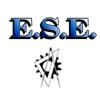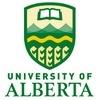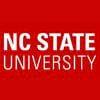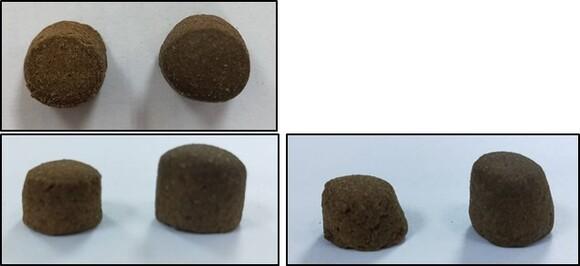Explore all the information on
Feed processing and manufacturing
Welcome to the page about Feed processing and manufacturing of Engormix; a source of knowledge on Feed processing and manufacturing.
Introduction: The castration of male piglets without anesthesia is under public pressure and is already forbidden in some countries. The fattening of boars is an alternative but due to the accumulation of androstenone (A) and skatole (S) in the fatty tissue, resulting in the so called boar taint, some carcasses may be condemned and therefore excluded from human consumption. Skatole is a product of the microbial tryptophan degradation in the hindgut, which can be lowered by feeding raw...
Comments : 0
Recommendations: 0
Jim Sutter, CEO - U.S. Soybean Export Council (USSEC), explains how the industry exceeded expectations during the pandemic, and discusses his organization's goals and initiatives for the present and future....
Comments : 0
Recommendations: 1
Constance Cullman (AFIA President & CEO) comments on sustainability, as well as supply chain and labor shortage issues, in this interview during IPPE 2023 in Atlanta, USA....
Comments : 0
Recommendations: 1
Rice bran, left over from milling white rice for human consumption, is an ingredient which is a good source of protein, minerals, fiber and fatty acids representing an alternative product for feed and food applications. Rice bran accounts for about 12% of the entire rice grain kernel, which is naturally rich in...
Comments : 0
Recommendations: 0
Keith Erdley (Wenger) discusses sustainability, waste management, energy efficiency and other important factors in pet food production, during FIGAP 2022 in Guadalajara, Mexico....
Comments : 2
Recommendations: 2
Free bus service from field operations will again be available for the upcoming 2023 International Production & Processing Expo (IPPE). Company employees and contract producers of companies actively involved in the production and processing of poultry and meat or the production of animal food, who are also members of the U.S. Poultry & Egg Association (USPOULTRY), American Feed Industry Association (AFIA) or North American Meat Institute (NAMI), are eligible to...
Comments : 0
Recommendations: 0
...
Comments : 0
Recommendations: 0
Rob Strathman (Famsun) discusses how to achieve safe and efficient production of aquafeed and pet food, during FIGAP 2022 in Guadalajara, Mexico....
Comments : 0
Recommendations: 2
Jeff Cruzen (GONBAR – NECO) comments on the principles, styles and other factors involved in the process of drying grains, during FIGAP 2022 in Guadalajara, Mexico....
Comments : 0
Recommendations: 0
What’s the decisive factor for high-yield operation of the poultry feed making machine? The most important components in the poultry feed making machine are the pressing roller and the die plate. However, the die plate is the most easily worn. Generally, when you buy a poultry feed making machine, they will purchase several sets of die plates to prevent the production volume. When it is too large, the die plate is easily damaged and brings losses to its own production.
1. How do you choose the...
Comments : 0
Recommendations: 1
INTRODUCTION Physical treatments, such as expansion and pelleting, are used in the processing of diets with the aim of enhancing feed efficiency. This occurs because during these processes, in addition to starch granule gelatinization, there are also partial protein denaturation, which leads to increased food digestibility and consequently improved broiler performance (Oliveira et al., 2011). Besides technological benefits, feed processing methods are associated with the...
Comments : 0
Recommendations: 0
Introduction Feed cost represents 70% of the total cost of poultry and pork production (Patience et al., 2015); therefore, a number of processing techniques have been developed to maximize utilization of nutrients in feed ingredients and diets for optimum animal growth performance. Oilseed meals are commonly exposed to varying degrees of heat to remove solvents used during oil extraction, increase nutrient digestibility, improve storage life, and to reduce anti-nutritional...
Comments : 0
Recommendations: 1
Overview – What Is Extrusion? The word extrusion means shaping a material or a blend of materials that can be plasticized (able to be melted and become fluid-like), and is pumpable by forcing through a restricted opening or die . The versatility of the process is evident in its ability to produce different types of foods. The power of the process can be further appreciated by its ability to create foods of varying textures...
Comments : 1
Recommendations: 1
Non-starch polysaccharides (NSP) have a considerable impact on digestibility in broilers, dictating nutrient availability and energy utilization. The high NSP content of the hulls in canola meal are one factor limiting its effective use in poultry diets. The major NSP present in canola meal include cellulose, pectic polysaccharides and a variety of non-cellulosic polysaccharides, including arabinoxylans (AX). Attempts have been made to increase utilization of canola meal through the use of...
Comments : 0
Recommendations: 0
We are presently going through a challenging period of high prices of raw materials and a limited availability of some of these materials. The use of less common raw materials that are readily available, and potentially less expensive, can be an alternative to traditional protein and energy sources and may help reduce the pressure on feed costs. However, new types of ingredients need extra attention to be paid to make sure they are suitable for feed processing, are free of contaminants,...
Comments : 1
Recommendations: 2
INTRODUCTION In the United States and most parts the world, the biggest portion of poultry diets is comprised of carbohydrates, with corn being the main cereal grain used in the feed industry (Moran, 1982; Ai and Jane, 2016; Agristats, 2018; IGC, 2018). Corn is dried on the field or usually dried either by constant flow or batch drying after harvesting, so it could be included in poultry feeds. It has been reported that temperatures while drying could reach more than 100C mainly...
Comments : 0
Recommendations: 0
Introduction The advantages of feeding a pelleted feed over mash have been documented in theindustry for many years. The advantages include the following: Increased bulk density Less bridging/hang-up in bins Less dust Reduced ingredient segregation Less feed waste Increased nutrient density Improved palatability Increased nutrient availability Decreased microbiological activity In...
Comments : 13
Recommendations: 0
We trial products with high fat. The fat before extruding around 7-8%. Using a single screw with high shear screw configuration and with die design for floating fish. The issue with the product is the size between the front and end is not symmetrical. What is the root cause of this issue? Is that from machine process or raw material? ...
Comments : 14
Recommendations: 4
As a critical part of a pellet feed mill, the ring die is not only directly related to pellet quality, but also to the maintenance cost of a feed mill. According to statistics, the cost of wear and tear of ring dies usually counts for 25% of the plant’s total maintenance expenses. As a result, it seems prudent to offer direction and instruction on the correct usage and maintenance of a ring die. ...
Comments : 5
Recommendations: 2
Marel is pleased to announce an agreement to acquire Wenger Manufacturing LLC, a global leader in processing solutions focused on pet food, plant-based proteins, and aqua feed. The acquisition of Wenger is a platform investment into new, complementary and attractive growth markets for Marel and will form the fourth business segment alongside poultry, meat and fish. The acquisition is subject to customary closing conditions such as anti-trust and approval of Wenger’s...
Comments : 0
Recommendations: 0







.jpg&w=3840&q=75)
















